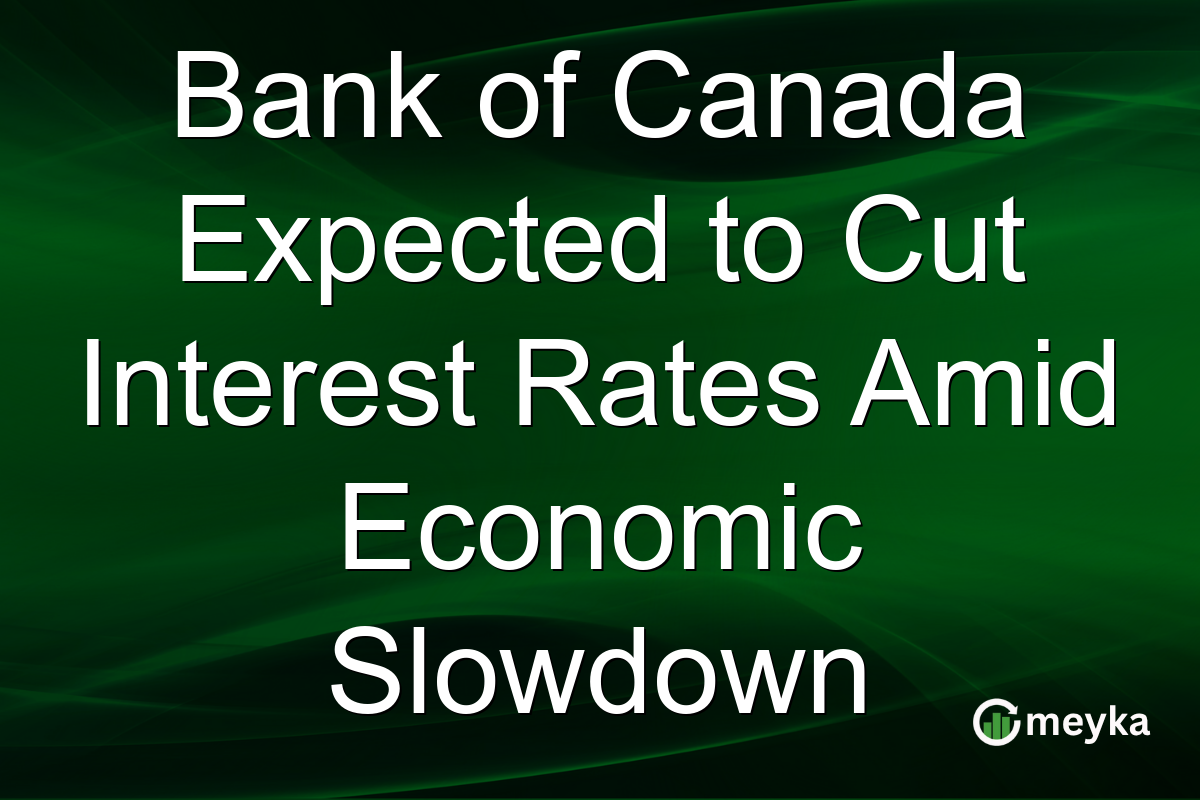Bank of Canada Expected to Cut Interest Rates Amid Economic Slowdown
The Bank of Canada is poised to make a significant move in response to the strained economic conditions. With forecasts indicating a cut in the overnight rate by 25 basis points to 2.50% on September 17, 2025, economic analysts are closely watching. This anticipated decision comes amid signs of a weakened labor market and a contracting GDP. As we explore the implications of this shift, we’ll delve into how it could affect everything from mortgage rates in Canada to broader economic stability.
Understanding the Interest Rate Cut
The speculation around the Bank of Canada’s decision to lower the interest rate stems from current economic challenges. Canada’s GDP has shown signs of contraction, dropping by 0.5% over the last quarter. This decline reveals underlying vulnerabilities that compel the central bank to act. Cutting the interest rate to 2.50% would aim to stimulate economic activity by making borrowing cheaper. It’s a measure designed to encourage spending and investment at a time when consumer confidence is waning. This potential move also comes in response to a weakening labor market. Unemployment rates have crept up to 6.3%, pressing the need for economic intervention. The central bank’s strategy focuses on reigniting growth by offering more favorable lending conditions to businesses and consumers alike. By adjusting the cost of borrowing, the Bank of Canada hopes to provide a much-needed boost to economic activities, which could help counteract the projected downturn.
Impact on Mortgage Rates in Canada
One of the immediate effects of a lower interest rate could be on mortgage rates in Canada. Homebuyers and existing mortgage holders stand to benefit as lending rates drop. Currently, the average mortgage rate hovers around 3.75%, but this could decrease further following the rate cut. For Canadians considering buying a home or renegotiating their mortgage terms, this presents an opportunity to secure lower interest payments. A reduction in mortgage rates often leads to increased activity in the housing market. The lower cost of borrowing can stimulate demand, potentially driving up property prices. This dynamic is a double-edged sword, as it might lead to housing affordability concerns if prices rise too rapidly. However, for now, the focus remains on easing the financial burden for homeowners and encouraging economic movement during the slowdown.
Economic Slowdown and Market Reactions
The backdrop to the Bank of Canada’s decision is the broader economic slowdown. Recent data indicates a slowdown in annual GDP growth, which was only 1.2% this year compared to 2.8% last year. This significant drop highlights the sluggish pace of economic expansion, warranting attention from policymakers. Lowering the interest rate is part of a broader strategy to invigorate the national economy amid these challenges. Market analysts expect mixed reactions. Investors might view the rate cut positively, as cheaper borrowing costs can drive business expansions and increase market liquidity. However, there could be concerns about long-term impacts on inflation, which currently stands at 2.1%. Balancing these concerns will be crucial for sustaining economic health. The move aims to counteract some of the negative sentiments and jumpstart economic activities across sectors.
Broader Implications for Canada’s Economy
Beyond the immediate effects on borrowing costs, the Bank of Canada’s move plays into a larger economic narrative. The anticipated rate cut reflects a need to adapt quickly to changing global conditions. Canada is not isolated from international economic pressures, such as trade tensions and economic competitions that affect global markets. Responding to these pressures requires strategic actions like adjusting the interest rate. Moreover, a successful implementation of this monetary policy could restore confidence in the Canadian economy. It signals a proactive approach from the central bank, addressing current and anticipated challenges. If economic indicators show improvement following the rate reduction, it could set a positive precedent for future policymaking. Investors and businesses may see this as a sign of economic resilience, fostering a more stable investment landscape.
Final Thoughts
The decision by the Bank of Canada to potentially cut interest rates highlights the critical measures required in times of economic difficulty. By lowering the rate, the bank acknowledges the need to stimulate growth amidst challenges such as a weakened labor market and shrinking GDP. For investors and homeowners, this move could present new opportunities and risks. Utilizing platforms like Meyka, investors can gain real-time insights and analysis, helping navigate these evolving conditions. As we watch the unfolding impacts, staying informed remains key to leveraging these changes.
FAQs
The expected cut in the Bank of Canada’s interest rate is likely to lower mortgage rates, making borrowing more affordable and potentially stimulating the housing market.
The rate cut is in response to a contracting GDP and a weakening labor market, aiming to stimulate economic growth and prevent further downturns in Canada’s economy.
While it could boost immediate economic activity, there are concerns about potential inflationary pressures and the balance required to sustain long-term economic health.
Disclaimer:
This is for information only, not financial advice. Always do your research.






